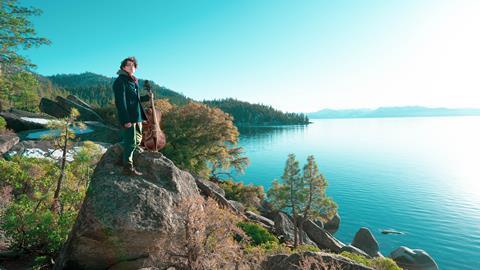Aaron Sinclair writes about the impact music has on the environment and what measures musicians and concert organisers can take to reduce their carbon footprint. From July 2021

As domestic and international travel reopens, orchestras and soloists plan their touring schedules, young aspiring musicians travel to summer music festivals and students and professionals plan their next college or orchestral audition. It goes without saying that being a musician demands a lot of travel, and at a time of global climate emergency it begs the question of how much carbon our travels are pumping into the atmosphere. So with this in mind, let’s discuss the environmental cost of making, performing and distributing our music.
Rather than write another article to make an argument for reusable water bottles, public transportation, or eating plant-based, I would like to make a plea for individual carbon footprint awareness.
How much carbon do I produce when I travel?
Are there practical lifestyle changes I can make to reduce my carbon footprint?
Transportation is the largest source of greenhouse gas emissions in the US, and air travel the most carbon-intensive. One round-trip flight from NYC to London is equal to 1.09 metric tons of carbon per person. A London Philharmonic performance at Lincoln Center, with a moderately sized orchestra of 50, produces 54.9 metric tons of carbon. And that’s just the flight. We haven’t calculated the cost of transporting instruments and people to and from the venue, the energy cost to operate the venue, the cost of the attending audience, promotions, merchandise, etc. A 2010 greenhouse gas study found that the annual carbon cost for touring orchestras was 9480 tons. To put that into perspective, the average American uses 16 tons of carbon annually, while eleven of the poorest countries in the world use a combined 0.6 tons of carbon per year. In the UK alone, a recent study found that live music generates 405,000 tons of greenhouse emissions each year.
Read: Analysis April 2022: Seeing the wood for the trees
Read: Cellist Christian-Pierre La Marca: being an active artist in society
Got a Spotify playlist ready for your trip? Music streaming is a huge source of carbon emissions. A 2016 report by the University of Glasgow found that in the US alone we produced over 385,000 tons of carbon from music streaming. And that’s not including the enormous water footprint. Water is required to cool down and generate power to the data centers that house these streaming platforms. In 2018, the top ten songs on Spotify used 459 Olympic-size swimming pools of water.
And what about the 1.5 million pounds of strings that end up in landfills annually? Or the threat to the endangered pernambuco tree our bows are made from? This barrage of gloom and doom is daunting, but now is not the time to bury our collective heads in the sand, especially in light of the May 2021, WMO report warning we are likely to see a 1.5℃ (or 34.7℉) shift in temperature over the next five years.
As artists living at a time of global climate emergency, we have a responsibility to bring awareness to this issue and engage in behaviours that lessen our impact. From Beethoven’s ’Pastoral’ Symphony to John Luther Adams’ Become Ocean, artists have for centuries been inspired and brought awareness to environmental issues. I suspect everyone reading this post is a nature lover. But can we really say we love nature when our actions don’t jibe with our speech? Many artists broadcast their love for the environment, yet their lifestyles are at odds with this sentiment.
We all have a part to play in this climate story and as musicians we must do our part. Writing and performing pieces exulting the majesty of nature, while beautiful and necessary, is simply not enough. Traveling will always be a part of a musician’s life, so it is crucial we make daily sustainable choices. And choosing reusable water bottles, public transport and plant-based foods may be a great place to start. We should also insist that concert halls implement sustainable strategies in their daily operations, and that senior management and their boards incorporate sustainable strategies in their touring scheduling, from travel logistics to goods, services and venue selection. Or instead, you could consider planting trees.
As a cellist, the old spruce tree I carry around and play every day inspires me to find ways to offset my own carbon footprint. Did you know it takes 1025 trees to offset the average American’s carbon footprint? And that number goes down considerably if you eat plant-based, avoid fast fashion and single-use plastics, watch your water and energy consumption, and travel sustainably. My carbon load is 9.22 tons a year, which is equal to 591 trees, but my new album, Notes of Nature, is offsetting my carbon footprint annually with 100% of the proceeds going to reforestation and sea turtle conservation. So far, I’ve planted 2000 trees!
Calculate your carbon footprint here: https://www.carbonfootprint.com/calculator.aspx
Aaron Sinclair’s album Notes of Nature: https://ffm.to/notesofnature
Analysis April 2022: Seeing the wood for the trees
- 1
- 2
- 3
- 4
- 5
- 6
- 7
 Currently reading
Currently reading’As a cellist, the old spruce tree I carry around and play every day inspires me to offset my own carbon footprint’
- 8
- 9
- 10










































No comments yet